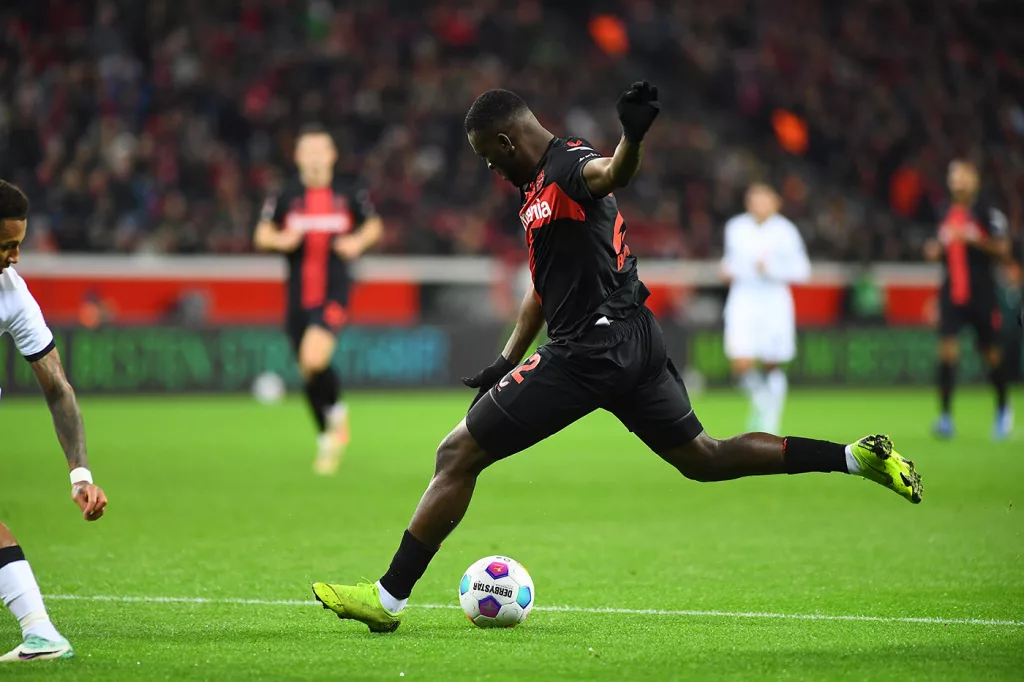For many enthusiasts of soccer, Bayer Leverkusen’s current performance under Xabi Alonso is nothing short of a miracle. Recently, this was exemplified in their stunning 3-0 victory against the formidable Bayern Munich, a result that speaks volumes about the team’s transformation. This resurgence of Leverkusen, transitioning from a period of uncertainty to one of remarkable success, can be largely attributed to Alonso’s insightful and strategic coaching.

Alonso’s Tactical Approach
Xabi Alonso, in his role at Bayer Leverkusen, has introduced a distinct and sophisticated soccer strategy. His preference for a 3-4-2-1 formation has been a game-changer. This setup is characterized by an asymmetrical utilization of wing-backs, where one integrates into the defensive line and the other advances to a near-striker position.
If you have control of the midfield, you have control of the game, and you have more chances to win. If you win the midfield, you probably win the game.
Xabi Alonso
This tactic creates a strategic imbalance, often bewildering opponents and generating scoring opportunities for Leverkusen. This innovative use of formation has not only disrupted traditional play patterns but also showcased Alonso’s ingenuity in tactical planning.

Build-up Play and Exploiting Space
A cornerstone of Alonso’s approach is his emphasis on build-up play under pressure, a method that has redefined Leverkusen’s offensive dynamics. By inviting opposition pressure, Leverkusen creates exploitable spaces. Players like Jeremie Frimpong become crucial in this scenario, using their pace to dart past defenders and capitalize on the created open spaces. Furthermore, the team often employs a winger who drops back to receive the ball, thereby initiating transitional plays that displace opposing defenders and create advantageous situations.

Counter-Pressing Strategy
Alonso’s Leverkusen is also renowned for its nuanced counter-pressing strategy. Instead of opting for an aggressively overt press, the team implements a 3-2 box in midfield. This approach effectively corrals opponents towards the flanks, setting traps for unsuspecting full-backs. Excelling in transitional phases, Leverkusen thrives by exploiting spaces that emerge either from their pressing actions or during possession phases of their opponents. This method has been pivotal in defining their play style in the Bundesliga.
Defensive Structure
Defensively, Alonso has transformed Leverkusen into a well-organized and resilient unit. In offensive situations, they adopt a 5-2-3 formation, seamlessly transitioning to a 5-2-2-1 in deeper defensive stances. This flexibility in formation fortifies Leverkusen’s central defense, making them a formidable barrier against opposing attacks, while simultaneously poised for effective counter-attacks.
Alonso’s Influence and Style
Alonso’s coaching ethos is deeply influenced by his own soccer career, renowned for his exceptional passing and tactical acumen. As a coach, he has translated these traits into a coaching philosophy that values control, tactical adaptability, and the exploitation of spatial advantages. His balanced approach at Leverkusen encapsulates a blend of offensive innovation and steadfast defensive organization, contributing to the team’s newfound strength in the Bundesliga.
Conclusion a Remarkable Transformation
Xabi Alonso’s arrival at Bayer Leverkusen has sparked a remarkable transformation, proving that strategic brilliance can elevate a team to new heights. His tactical acumen has not only redefined Leverkusen’s style of play but also instilled a robust winning mentality. This period under Alonso’s guidance may well be remembered as a defining era in Leverkusen’s history, marking the dawn of a new, dynamic force in European soccer.
eBook – Pep Guardiola Case Study

How to penetrate the opponent´s lines following positional play principles. Learn why this specific style is more effective than the others. Over 75 pages, includes detailed explanations, specific drills and game situations!

